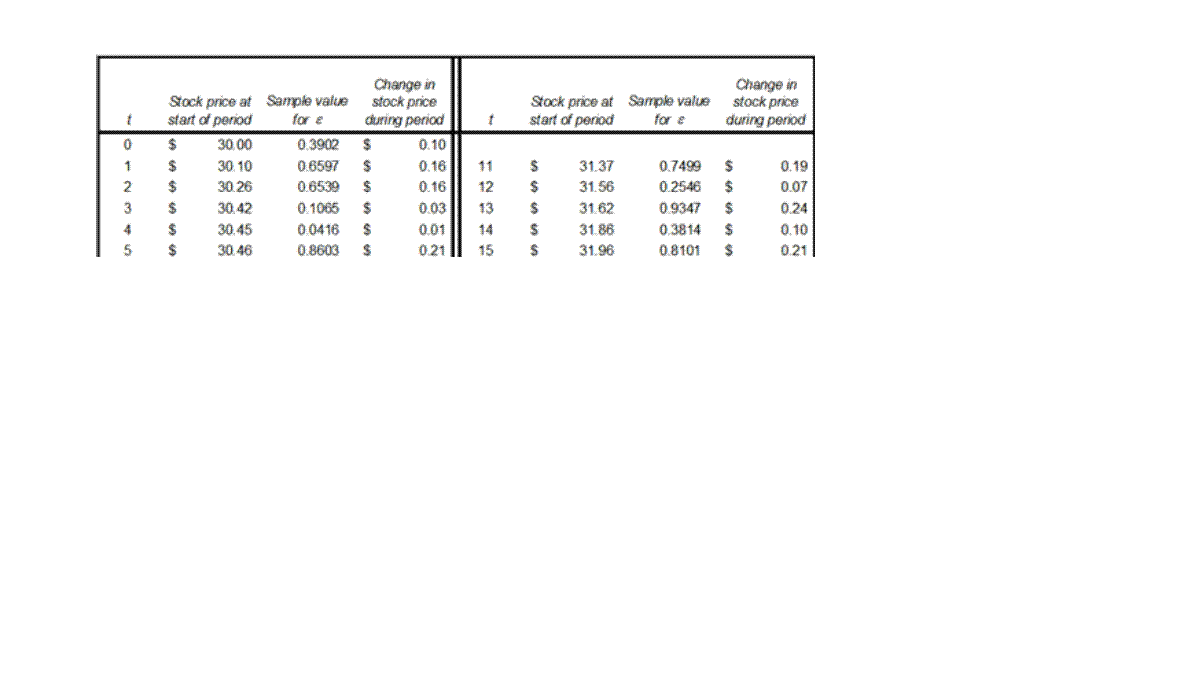
7. Consider a stock that pays no dividends, has a volatility of 25% per annum and an expected return of 13% per annum. Suppose that the current share price of the stock, S0, is USD 30. You decide to model the stock price behavior using a discrete-time version of geometric Brownian motion and to simulate paths of the stock price using Monte Carlo simulation. Let Δt denote the time interval used and let St denote the stock price at time interval t. So, according to your model,
St+1=St(1+0.13Δt + 0.25√Δt ε)
where ε is a standard normal variable.
To implement this simulation, you generate a path of the stock price by starting at t = 0, generating a sample for ε, updating the stock price according to the model, incrementing t by 1, and repeating this process until the end of the horizon is reached.
You have implemented the simulation process discussed above using a time interval Δt = 0.001, and you are analyzing the following stock price path generated by your implementation.
[attach]13795[/attach]
Given this sample, which of the following simulation steps most likely contains an error?
A. Calculation to update the stock price.
B. Generation of random sample value for ε.
C. Calculation of the change in stock price during each period.
D. None of the above.
[此贴子已经被作者于2009-6-13 10:35:37编辑过]


Correct answer is B
The validity of the calculation to update the stock price is easily verified, as is the validity of the calculation of the change in the stock price during each period. The fact that after 20 time periods, the sample value of ( has never been negative is very suspicious and likely contains an error.
Reference: Hull, Jorion.
Type of Question: Quantitative Analysis
非常感谢
| 欢迎光临 CFA论坛 (http://forum.theanalystspace.com/) | Powered by Discuz! 7.2 |